Here is the case for Billy Hatcher and the Giant Egg:
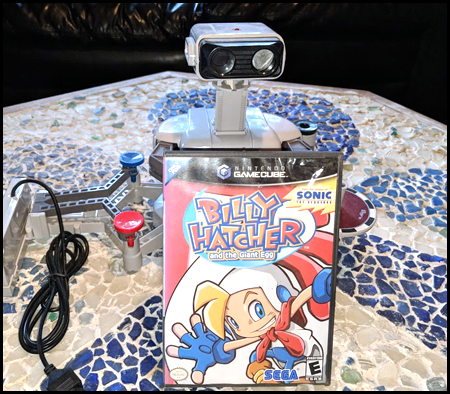
And here is the main reason anyone ever bought Billy Hatcher and the Giant Egg:
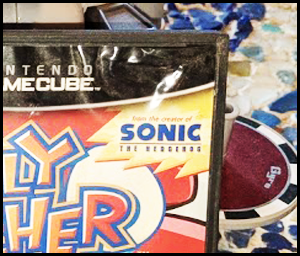
And that starburst is no lie. Billy Hatcher is the creation of Sonic Team and its (then) head, Yuji Naka, the man widely credited with the creation of Sonic the Hedgehog.
But does that mean anything?
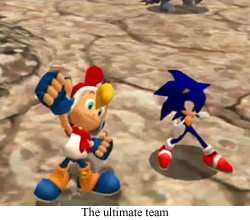 Let’s start with Yuji Naka. To start, Yuji Naka is a programmer, not an artist or character designer, but it is that programming that is absolutely the reason we have Sonic the Hedgehog. Naka created one simple trick for animating hedgehogs: he developed an algorithm for rendering sprites on curves. And that’s huge! We absolutely take it for granted now, but the very concept of Sonic on a loop would be impossible without such coding. So, sure, Naka didn’t draw the first Sonic, nor did he design the hedgehog’s levels, but he was responsible for a part of Sonic that is so iconic, it is still a huge part of the blue blur today. You don’t see Mario doing loops, but it is practically synonymous with Sonic the Hedgehog.
Let’s start with Yuji Naka. To start, Yuji Naka is a programmer, not an artist or character designer, but it is that programming that is absolutely the reason we have Sonic the Hedgehog. Naka created one simple trick for animating hedgehogs: he developed an algorithm for rendering sprites on curves. And that’s huge! We absolutely take it for granted now, but the very concept of Sonic on a loop would be impossible without such coding. So, sure, Naka didn’t draw the first Sonic, nor did he design the hedgehog’s levels, but he was responsible for a part of Sonic that is so iconic, it is still a huge part of the blue blur today. You don’t see Mario doing loops, but it is practically synonymous with Sonic the Hedgehog.
And the rest of Yuji Naka and Sonic Team’s history seems to be based around similar breakthroughs.
I don’t need to write a history of Sonic the Hedgehog, as such a thing has been covered by minds much greater than mine. However, there is a dearth of information on the trajectory of Sonic Team. We all know about Sonic, CDs, and Knuckles, but let’s talk about the heroes that never met Eggman. Let’s revisit Ristar.
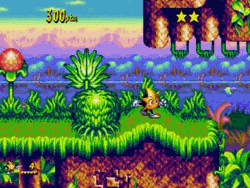 Naka didn’t seem to have much to do with Ristar, but the basic concept for the adventure came from his pre-rolling ideas for Sonic the Hedgehog. The “original” Sonic (or at least one of them) was a bunny that would grab enemies with his extendable ears. This concept fell by the wayside when Sonic earned his speed and rolling (rabbits don’t roll, do they?), but was eventually revived for Ristar. And it was good! In a time of innumerable “mascots with attitude” (which only existed because of Sonic anyway), Ristar stood out not only for his memorable design, but also his fun “grab and fling” gameplay. Sure, we’d see something similar again with Mischief Makers, but it was almost wholly unique for the time (and still is). Ristar, like Sonic, rode a wave of a new and interesting gameplay mechanic, and could easily have been the hedgehog’s successor.
Naka didn’t seem to have much to do with Ristar, but the basic concept for the adventure came from his pre-rolling ideas for Sonic the Hedgehog. The “original” Sonic (or at least one of them) was a bunny that would grab enemies with his extendable ears. This concept fell by the wayside when Sonic earned his speed and rolling (rabbits don’t roll, do they?), but was eventually revived for Ristar. And it was good! In a time of innumerable “mascots with attitude” (which only existed because of Sonic anyway), Ristar stood out not only for his memorable design, but also his fun “grab and fling” gameplay. Sure, we’d see something similar again with Mischief Makers, but it was almost wholly unique for the time (and still is). Ristar, like Sonic, rode a wave of a new and interesting gameplay mechanic, and could easily have been the hedgehog’s successor.
But Ristar premiered all of a few months before the release of the Sega Saturn, so that rising star got eclipsed by a planet, and was never seen again.
But Sonic Team still had Sonic, so they still had the ear of their parent company. That Saturn release brought new opportunities, and, with the innovation of an analogue controller, Nights Into Dreams made the scene.
And, boy, did that game ever suck.
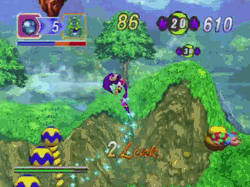 Okay, I’m just salty because Nights is a terrible, terrible game, but many people saw the appeal of the action floating title. Once again, Sega took a new technology (the aforementioned analogue controller), and married it to some gameplay that had never been seen before. Naka (he’s back!) endeavored to make a game that was based on flight, but a more gentle flight, as opposed to the cape or raccoon-based actions of some other heroes. And, to Nights’ credit, that feeling absolutely comes through during the gameplay. Nights may have been phenomenally boring for anyone that was expecting another Mario 64, but, taken on its own terms, it’s a pleasant experience. Once again, Sonic Team used unique physics and development to create a singular game, this time complete with the rare human character that has the same kind of universal appeal as your more memorable mascots.
Okay, I’m just salty because Nights is a terrible, terrible game, but many people saw the appeal of the action floating title. Once again, Sega took a new technology (the aforementioned analogue controller), and married it to some gameplay that had never been seen before. Naka (he’s back!) endeavored to make a game that was based on flight, but a more gentle flight, as opposed to the cape or raccoon-based actions of some other heroes. And, to Nights’ credit, that feeling absolutely comes through during the gameplay. Nights may have been phenomenally boring for anyone that was expecting another Mario 64, but, taken on its own terms, it’s a pleasant experience. Once again, Sonic Team used unique physics and development to create a singular game, this time complete with the rare human character that has the same kind of universal appeal as your more memorable mascots.
But the Saturn crashed and burned, so there was no new Sonic to be found there.
But speaking of burning, Sonic Team’s next big release was Burning Rangers, a sort of action/FPS-ish mash-up that focused on futuristic firefighters… uh… fighting fires. It’s what they do. At a time when Doom and Final Fantasy 7 alike were setting the world ablaze with complicated heroes and murder rates that put Robocop’s Detroit to shame, Burning Rangers was a semi-serious “anime game” that focused not on combating people or demons, but fires. And the future setting allowed for some interesting gameplay maneuvers, like jet boots (always appreciated) and a host of fire-retardant “weapons”. And the fires looked pretty cool, too! It’s still the Sega Saturn, but fire was a lot more believable here than on a number of contemporary systems. Go Burning Rangers, go! For inflammable justice!
Unfortunately, Burning Rangers had the dual problems of “not good enough (hit detection)” and “such small portions (of four levels)”, so it got flushed down the same toilet as the Saturn. Oh, and there wasn’t a memorable enough character in the whole ranger squad.
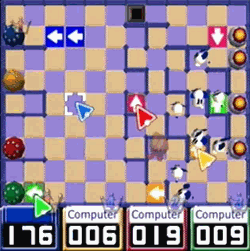 But the Dreamcast brought new opportunities, and a metric mickey-load of mice. ChuChu Rocket! was described as an action puzzle game, but that is completely wrong. ChuChu Rocket! is frenetic joy in mini, mousey form. Once again, Yuji Naka used the latest technology to create something that appeared to be graphically simple, but had a lot going on under the hood. At any given ChuChu moment, there may be hundreds (or at least a hundred) lil’ mice on the screen at a time. While we take such a thing for granted nowadays, that was an exciting new frontier in 1999. And the Dreamcast was capable of supporting this nonsense not only on the couch, but online as well. No small feat in the age of AOL. Or, actually, it meant a lot of small feet puttering around and attempting to avoid KapuKapus. And, can’t stress this enough, ChuChu Rocket! was one of the best multiplayer games of the era, and certainly the most unique.
But the Dreamcast brought new opportunities, and a metric mickey-load of mice. ChuChu Rocket! was described as an action puzzle game, but that is completely wrong. ChuChu Rocket! is frenetic joy in mini, mousey form. Once again, Yuji Naka used the latest technology to create something that appeared to be graphically simple, but had a lot going on under the hood. At any given ChuChu moment, there may be hundreds (or at least a hundred) lil’ mice on the screen at a time. While we take such a thing for granted nowadays, that was an exciting new frontier in 1999. And the Dreamcast was capable of supporting this nonsense not only on the couch, but online as well. No small feat in the age of AOL. Or, actually, it meant a lot of small feet puttering around and attempting to avoid KapuKapus. And, can’t stress this enough, ChuChu Rocket! was one of the best multiplayer games of the era, and certainly the most unique.
But it all paled in comparison to Sonic Team’s Phantasy Star Online. Naka simply produced this title, but it was another example of Sonic Team pushing technology to the limits. In this case, the online capabilities of the Dreamcast were extended to create arguably the first MMORPG on a console. And it was good! And fun! And full of hungry mags! And if it were released on a system that was actually popular, and during an era when high speed internet was standard (and not the exclusive domain of college students) it might have been one of the defining works of the genre. But, unfortunately, PSO seems to be remembered and recounted in the same breaths as Atari’s Adventure: it basically started a genre, and did it well, but by the time that genre was actually mainstream, the ancestor was all but forgotten. Sorry, PSO, at least we’ll always have old Penny Arcade strips to remind us of the good old days.
Samba de Amigo was also a Dreamcast title that utilized a brand new piece of technology. And that tech was… plastic maracas. Uh, for some reason, that failed to capture the zeitgeist of the nation.
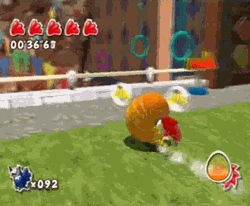 And then, finally, we arrive at our “from the creators of Sonic the Hedgehog” title of the day, Billy Hatcher and the Giant Egg. BHatGE was the first new Sonic Team IP to ever appear on a non-Sega system. Sonic Team had already gained some Gamecube experience with rereleases of the Sonic Adventure titles, and Billy Hatcher does feel like a natural evolution of the SA engine. But this is no mere Sonic clone! Even with a “spin dash” like egg rolling skill, nearly all of Billy’s moveset is all new… or at least all different. Rolling an egg and “using” the egg for acrobatic maneuvers sounds pretty straightforward (see any game where you push boulders or blocks), but it’s obvious that a lot of care and effort went into… egg physics? Is that a thing? What’s important is that “Billy” and “Billy with an egg” are arguably two totally different characters, and the utilization of both movesets (and protecting your egg whenever possible) is important to making progress.
And then, finally, we arrive at our “from the creators of Sonic the Hedgehog” title of the day, Billy Hatcher and the Giant Egg. BHatGE was the first new Sonic Team IP to ever appear on a non-Sega system. Sonic Team had already gained some Gamecube experience with rereleases of the Sonic Adventure titles, and Billy Hatcher does feel like a natural evolution of the SA engine. But this is no mere Sonic clone! Even with a “spin dash” like egg rolling skill, nearly all of Billy’s moveset is all new… or at least all different. Rolling an egg and “using” the egg for acrobatic maneuvers sounds pretty straightforward (see any game where you push boulders or blocks), but it’s obvious that a lot of care and effort went into… egg physics? Is that a thing? What’s important is that “Billy” and “Billy with an egg” are arguably two totally different characters, and the utilization of both movesets (and protecting your egg whenever possible) is important to making progress.
So if you’re expecting Sonic out of Billy Hatcher, or any other non-Sonic Sonic Team game, you’re out of luck. Billy Hatcher is no more Sonic the Hedgehog than Ristar or Burning Rangers. But if you look at the history of Sonic Team’s other adventures, that’s exactly what should be expected. Sure, Sonic Team is known for their eponymous mascot, but they have an established history of using new technology and techniques to create new IPs and experiences. Granted, not a single one of them has moved on to anything but random crossover games, but it’s the thought that counts. After all, the world would be a lesser place without Nights or PSO, so keep on innovating, Sonic Team! And keep on rolling, Billy Hatcher!
FGC #383 Billy Hatcher and the Giant Egg
- System: Nintendo Gamecube. There was also a PC port in Europe, because… I have no idea.
- Number of players: Multiplayer egg races are available, so four. Did you know that Billy has all sorts of friends that I absolutely cannot name right now? Maybe his girlfriend is named Roll? I might be thinking of some other hero, though.
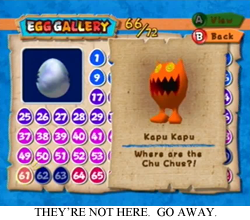 Sonic Team Coda: Aside from Feel the Magic, it seems post-Billy Sonic Team has been exclusively sticking to established IPs, like Phantasy Star and Puyo Pop. However, the spirit of innovation seems to live on in the Sonic series, as it’s pretty obvious how Sonic Unleashed was an attempt at 3-D Ristar. Of course, most of this experimentation has not been remotely well received by the fanbase, so is it any wonder that Naka is moving on to squarer pastures?
Sonic Team Coda: Aside from Feel the Magic, it seems post-Billy Sonic Team has been exclusively sticking to established IPs, like Phantasy Star and Puyo Pop. However, the spirit of innovation seems to live on in the Sonic series, as it’s pretty obvious how Sonic Unleashed was an attempt at 3-D Ristar. Of course, most of this experimentation has not been remotely well received by the fanbase, so is it any wonder that Naka is moving on to squarer pastures?- So, did you beat it? Back in the day, I got really into Billy Hatcher, and unlocked/beat about 95% of the game. I exploded so many ravens, it was ridiculous. This was back when Mario 64-esque action games were completely my jam. Unfortunately (or maybe fortunately), I no longer have the attention span to 100% most any game that includes physical challenges (JRPGs are easy, and can be 100%’ed while watching The Good Place), so I kind of miss my old standards for dedication when I see a completed (or thereabouts) Gamecube-era save.
- Favorite Hatchling: You can gain the cooperation of a KapuKapu, and that is marvelous.
- Connectivity: Oh, and this is one of those old Gamecube games that utilized the ability to send games to your Gameboy Advance through a link cable (and, in this title, hatching the proper egg). I never got to test out such features (as it would have interrupted my Pokémon Ruby/Metroid Fusion time), but it’s always nice to have portable options. And to be reminded the VMU ever existed…
- Aborted History: This was released during the epoch when Nintendo seemed kind of skittish about referencing other systems when a Nintendo alternative was available.
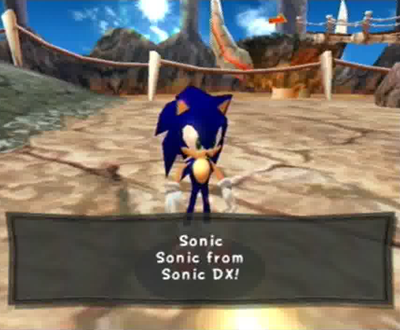
Look, it’s Sonic the Hedgehog! From that one Gamecube game!
- Did you know? There is a real life Billy Hatcher! He played major league baseball for a number of teams back in the 80’s/90’s. William Augustus Hatcher’s batting average was 264, had 54 home runs, and he even played for the Philadelphia Phillies at a time when I remotely paid attention to such a thing. I am absolutely sure he doesn’t see a dime of royalties, either.
- Would I play again: Billy Hatcher is an interesting, enjoyable game. I’d be all about a Billy Hatcher 2, but I doubt I’ll ever play the original again. This is another Sonic Team forgotten gem (emerald?), but I think I like Sonic Team’s more memorable gems better.
What’s next? Random ROB has chosen… Sega 3D Classics Collection for the 3DS! Guess we’re going to see Sonic again, but with a little more depth this time. Please look forward to it!
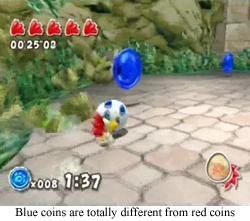

Billy Hatcher and the Giant Egg is a game I’d really like to see get an HD remaster. Not specifically ‘cuz it needs to be HD, but because a remaster could fix the frequent inexplicable bouts of slowdown, maybe make some of the more precise platforming feel less janky. Game deserves better than to be stuck on Gamecube and forgotten old PC/Mac ports forever.
Anyway, I’ve played with the GC/GBA link-up, so I know what it does! It has downloadable versions of the following:
1) A simplistic scrolling shooter where you have Billy Hatcher roll over enemies and collect fruit with an egg projectile
2) Same as 1 but it’s harder now
3) A demo of the GBA Chu Chu Rocket! game
4) Puyo Puyo
5) The NiGHTS GBA tech demo mini game* https://youtu.be/f1PZjB2bDoU
Neat stuff, but you’re not missing anything huge.
* I did not realize just how accurate a representation of NiGHTS into dreams… that li’l throwaway score attack mini game was until I played the HD version of the PS2 remake like a decade later. Even moreso than Crash Bandicoot over on the PlayStation, NiGHTS was very much a 2D game wearing a 3D skin.